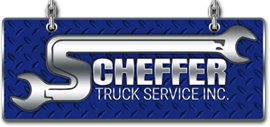When you manage a fleet, keeping your vehicles on the road is crucial to your business’s success. Breakdowns, missed deliveries, or downtime can lead to lost revenue and frustrated customers. That’s why finding a trustworthy fleet repair shop in your area is one of the smartest investments you can make for your business. Here’s how to locate a dependable shop and why working with certified fleet technicians like the crew at Scheffer Truck Service makes all the difference.
Locating a Dependable Fleet Repair Shop
1. Start with Research and Recommendations
The first step to finding a reliable fleet repair shop is to do your homework. Ask other business owners in your area who they trust with their fleet. Word-of-mouth referrals are often the most reliable because they come from firsthand experience. You can also search online for “fleet repair near me” and check Google reviews, ratings, and customer feedback.
Look for consistent positive comments about professionalism, turnaround time, and quality of work. A shop like Scheffer Truck Service in Cape Girardeau with satisfied long-term clients is usually one you can trust.
2. Check for Experience with Fleets
Not every auto repair shop is equipped to handle the demands of commercial fleets. Make sure the facility you choose specializes in fleet repair services. Fleet vehicles often require specialized diagnostic tools, heavy-duty lifts, and parts that differ from standard passenger cars.
A shop with dedicated fleet repair technicians understands how to service multiple vehicles efficiently, minimize downtime, and maintain manufacturer standards. Ask potential shops how many fleets they currently service and what types of vehicles they work on—vans, trucks, or mixed fleets.
3. Verify Certifications and Credentials
Professional certifications matter. When a shop employs ASE-certified fleet technicians, it means their team has proven expertise in diagnosing and repairing complex systems. Certifications show commitment to quality, ongoing training, and industry standards.
Additionally, check if the shop is licensed, insured, and compliant with local regulations. This ensures accountability and gives you peace of mind when your vehicles are in their care.
4. Evaluate Their Preventative Maintenance Programs
A reliable fleet repair shop like Scheffer Truck Service doesn’t just fix vehicles, we help you prevent future issues. Ask about preventative maintenance programs. A good shop will track service intervals, oil changes, brake checks, and tire rotations for your entire fleet.
This proactive approach helps reduce unexpected breakdowns and extends vehicle lifespan, ultimately saving your business money and time.
5. Review Their Communication and Transparency
Clear communication is key when trusting someone with your fleet. Look for a shop that provides detailed estimates, transparent pricing, and regular updates throughout the repair process.
A trustworthy fleet repair shop will explain what’s needed, why it’s needed, and when you can expect your vehicles back on the road. Many also offer digital inspections and photos so you can see exactly what’s being repaired.
6. Consider Turnaround Time and Availability
Downtime hurts business productivity. The best fleet repair shops understand this and prioritize fast turnaround without compromising quality. Ask how they handle emergency repairs, after-hours service, or mobile repair options.
Dedicated fleet repair technicians know how to work efficiently while keeping safety and performance top priorities.
Why a Specialized Fleet Repair Shop Matters
Fleet vehicles experience different wear patterns, higher mileage, and more demanding schedules than personal cars. That’s why it’s critical to choose a shop like Scheffer Truck Service that specializes in fleet repair, not just general auto service.
Our experienced fleet technicians understand the importance of maintaining consistency across multiple vehicles, ensuring each one performs reliably and safely. With the right fleet repair partner, you’ll reduce costly breakdowns, improve operational efficiency, and keep your business running smoothly. So if your business needs expert fleet repair and maintenance service that it can rely on, and you’re in the surrounding areas of Cape Girardeau, schedule service with us today!

